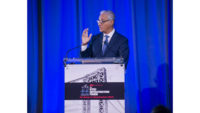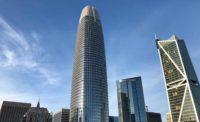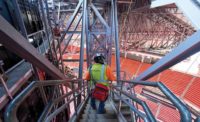China Grapples With Supertall Building Boom










Political issues, not just technical ones, cloud development in China—tall buildings or otherwise. Current political uncertainty is related to the change in national leadership, which happens every 10 years. Xi Jinping, the People’s Republic of China’s vice president, is likely to succeed Hu Jintao, as state president, say observers.
But uncertainty will remain at least until the transition of power is complete, in November. Until then, “everyone is frozen in the decision-making chain,” says Jeffrey Heller, president of Heller Manus Architects, San Francisco.
The general consensus is that Xi Jinping would keep China on the right path, says Heller, who is involved in sustainable urban planning initiatives in 10 China cities, including Guangzhou, Shanghai and Suzhou.
The global economic slowdown has also hit China. But private residential developers have another burden. They have been hit by a government-imposed limit on real-estate sales, which has cut demand. Citizens can only buy their primary residence not a secondary residence, said Heller.
“Developers have pulled in a lot,” thanks to the political uncertainty, the limit on purchases and to the reduction of available capital for commercial development, he added.
Tishman Speyer, a New York City-based developer working in China, paints a different picture regarding commercial development. A recent change in laws governing the holding of real estate as an asset class for domestic insurers is “helping to expand the pool of institutional buyers of quality commercial product in China,” said Ryan Botjer, the developer’s senior managing director and regional head for China.
Tishman Speyer has completed one 10,996-sq-m development in Tianjin and has seven more developments in the pipeline. These developments, under way in Shanghai, Chengdu, Tianjin and Suzhou, total 1,803,951 sq m.
Supertall and Green
At the conference, many trained eyes were focused on ">Shanghai Tower. When completed as anticipated in 2015, the skyscraper will not only be China’s tallest, it will be the world’s second tallest—after the 828-m Burj Khalifa in Dubai, United Arab Emirates.
The design for the tapered, twisted Shanghai Tower by architect Gensler, San Francisco, calls for nine stacked zones, separated by two-story bands of mechanical and refuge space. The tower is sheathed in sheer glass, resembling vintage Baccarat crystal. The occupied space—a tower within the tower—is separated from the glass wrapper, except at the first level of each zone. Extending the floor slab at the "bands" from the inner tower to the glass wrapper creates an atrium space for each zone.












